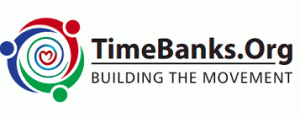Reflection by Edgar Cahn
This one is heavy but then the women’s movement is not exactly light.
It is no accident that when TimeBanking was birthed in the 1980s, it was activists in the women’s movement who picked it up and used it mobilize their communities. TimeBanking was created to document and to value labor that the market undervalued and persons whose contributions the market did not value.
Consider the implicit economic significance of that labor. One example: TimeBanking is now used to provide respite to caregivers for isolated seniors. What would be the value of that contribution if TimeBanking made it universally available?
Here’s what we know about unpaid care: Unpaid care in the United States is valued at $3.2 trillion or around 20 percent of the Gross Domestic Product (GDP). Women do the bulk of that work. American women spend over four and a half hours daily on unpaid work compared to just over 2 hours by men. And projections of the value of that labor has to be made in trillions, not billions.
A McKinsey Global Institute report found that if women participated in the global economy on an equal basis with men, it would add $28 trillion to the annual global GDP.
But there is much more to feminist economics and TimeBanking than simply valuing unpaid or undervalued labor. In TimeBanking, nationwide and worldwide, women continue to be the co-leaders, the leaders, and the innovators.
I learned earlier than most about respect and parity for females because I was born with a twin sister who was 15 minutes my elder. And much of the rest of my life has been spent in partnership with women. My late wife, Jean, preceded me in going to Yale Law School in 1957 and had our first child during her first exam period in January 1958. I followed her to Yale Law School two years later. Subsequently our joint efforts in creating legal services in the War on Poverty, in founding the Antioch School of Law, in pioneering clinical legal education, were based directly on her work as well as mine.
Antioch Law School was the first law school in history to start off with a founding class of more than 50% women and its successor, the UDC School of Law, also has more than 50% women in the student body.
My present partner and wife, Christine Gray, is initiating nationwide pilots of Gatherings With a Purpose – a low key, informal, consensual process of bringing people together to share with each other their ideas, their capacities, and resources and how they might use TimeBanking to achieve their individual and shared goals. Bringing people together means they cease to be strangers who are now invited to find a common purpose. It’s called the human family.
It is not difficult to predict from where the next civil rights revolution will come because it is already underway: the Me Too movement is the latest phase of an ongoing women’s movement that will play a huge role in shaping the future. In developed economies, it is already shaping the terms of employment, maternity and paternity leave, promotion and retirement. In more autocratic regimes, women assuming new roles will gain voice, demand accountability, and open doors to incremental or revolutionary democratic innovations.
Currently, gainful employment consists of labor that either produces material goods or alternatively renders a specialized service. But with the advent of an aging society, global warming coupled with artificial intelligence, robotics, and automation, we must radically transform our understanding of work and employment. We must single out, recognize, honor, and reward as essential and meaningful work contributions that advance ecological sustainability, public well-being, and that enlist others as co-producers advancing a public purpose.
For this we need more than one currency. TimeBanking will provide a prototype for fiscal strategies needed to create a new economic order where the nature of work will undergo redefinition.
The women’s movement will not only be warriors to demand that equal work secures equal returns. Its members will also function and are already functioning as social architects, shaping new kinds of collaborative structures that draw upon the unique power of collective action, collaboration, and of networking to produce critically needed outcomes, knowledge, products, and services.


Please sign in or register to make a comment.